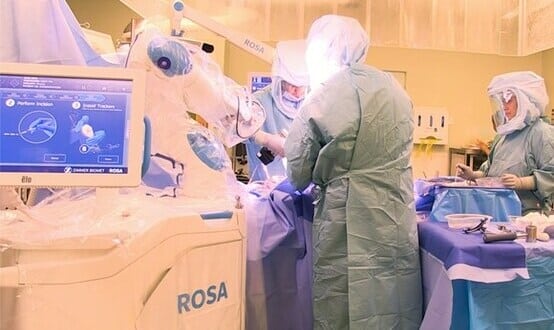Another view
- 27 November 2013

As you are probably aware, we have just seen the much-awaited GP contract. All sides are claiming it as a success. I remain to be convinced one way or the other.
For me, the key themes are the possible loss of practice boundaries – with NHS England managing home visits for those who live outside a visiting area – the increasing push to case management for vulnerable groups and the desire for extended opening. I don’t have a problem with any of that; but the devil is in the detail.
In order to stay the same, things will have to change
While the new contract is being implemented, we need to be aware of the impending retirement crisis fuelled by the NHS GP pension being destroyed, the imminent loss of seniority payments, the massive increases in taxation, and the general fatigue caused by dealing with increasing demand.
The crisis is likely to be upon us just as we face a lack of new recruits. If current trends continue, there will be fewer GPs; and probably fewer nurses too, as there seems to be a nursing shortage in primary care.
The remaining staff will be doing longer hours with more mobile, more IT literate patients more willing to complain. Small practices might not survive.
In fact, if you have been keeping up to date, you’ll have noticed that most authorities with a vision for GP practices are talking about federations, super practices, clubs, collectives, takeovers, mergers and the rest of it.
Lastly, let’s not forget the £20-30 billion funding gap that the entire NHS is facing, and is supposed to be plugging with quality, innovation, productivity and prevention initiatives.
Putting all this together, I think there will be an increasing need for alternate first-line providers of care. Not just nurse practitioners, but direct access physios, mental health workers, sexual health workers, social workers and perhaps even health visitors.
Pharmacists might finally get their wish to stop counting in multiples of 28 and put all that training to good use. One of my crazy ideas is ATM machines that dispense common meds for common conditions.
The future might have a lot of non-doctors providing first-line care, working together as a team. They might do that in a patient’s house or at traditional venues.
They might still work under the auspice of a GP practice, but that practice might have ten sites and a walk-in centre, or be part of a group of practices sharing back office facilities.
Let’s start with a whole new view of appointment systems
If this is the future, how does our IT need to change to support it? First on my list is that our appointments system needs a massive overhaul.
At different times of the day, who is answering the phone might change; and so might the location that they answer it from.
At night, a group of practices might employ someone to answer all of its phones, instead of relying on NHS 111 or the like, so that it can more accurately triage people.
During the day, a practice might answer its own phones or share in a central call centre with other practices with dedicated response times that might vary by time of day or day of week.
Numerous people need to be able to make and access appointment systems at different times. However, the right patient needs to get to the right person, in the right type of slot.
That will mean that a lot of triage will need to be built in and slots will need to be more dynamic, with slot length dependent on what needs doing.
Patients never seem keen on telling a receptionist why they have rung, even if it means that they get to see the right person. So what about computerised triage that directs people to the appropriate service?
Had an RTA? See a physio not a doctor. Feeling low? See a counsellor today not in ten weeks’ time.
And then build in virtual consultations
To return to the first point on my wish list, appointment systems in primary care need to link with what are traditionally considered referral services, and, on occasion, turn them into front-line services.
But wait; why does everybody need to come on down and see me, or even one of my new, front-line colleagues? What can’t some of the slots be voice or video calls?
Where these are going to work for clinicians and patients, they need to be seamlessly integrated and driven from my appointments system; not just run from a standalone Skype program.
I doubt the kind of Skype that we all use at home is secure enough or good enough anyway, given some recent experiences.
But we should be asking whether the counsellor and the patient really need to be in the same room. Surely, the patient who is unemployed and on benefits doesn’t need to go and sit in a room with somebody who works 50 miles away? Surely they can they sit in a room in my surgery and talk to them by video conference; or do the same thing from home?
Or how about a SandbachGPs Xbox live service for spotty teenagers? We appear on the screen in the bedroom, talk to the teenager, have a look at their skin via the link and then send them a prescription and monitor them on line.
More information would be good
Once we have a better appointment system, how about getting some useful information from it? How many patients were seen last year? When did they book their appointment? How long did they wait?
What is the least popular time to book an appointment? What time is the most popular? Do any age groups have special needs? We still have little information given so much data.
What about profitability? Which staff make us money through claims and procedures, and which don’t? Who sees the most people? Who the least? Practices need better business intelligence to help drive productivity.
When I was training to be a GP, everything was about the consultation; the model and eliciting the patient’s ideas concerns and expectations. GP computer systems have developed along similar lines, recording a consultation well using SOAP.
Systems of the future will need to have much better tools for managing groups – whether those are disease registers or at risk groups. They will need to be good at assigning tasks and monitoring whether those tasks are done – not something GPs currently excel at.
Instead of working as a team, we tend to be individuals working in one building; so we miss the big picture of who is and who is not on the list and what is happening to them. That needs to change; and the IT needs to help us do it.


Dr Neil Paul
Dr Neil Paul is a full time partner at Sandbach GPs; a large (22,000 patient) practice in semi-rural Cheshire. He is also one of the directors of FYS Healthcare. Dr Paul has been involved in primary care IT and health service management for many years in various roles, including PEC member and urgent care lead. In his spare time, he writes medical iPhone software and is a keen photographer.




